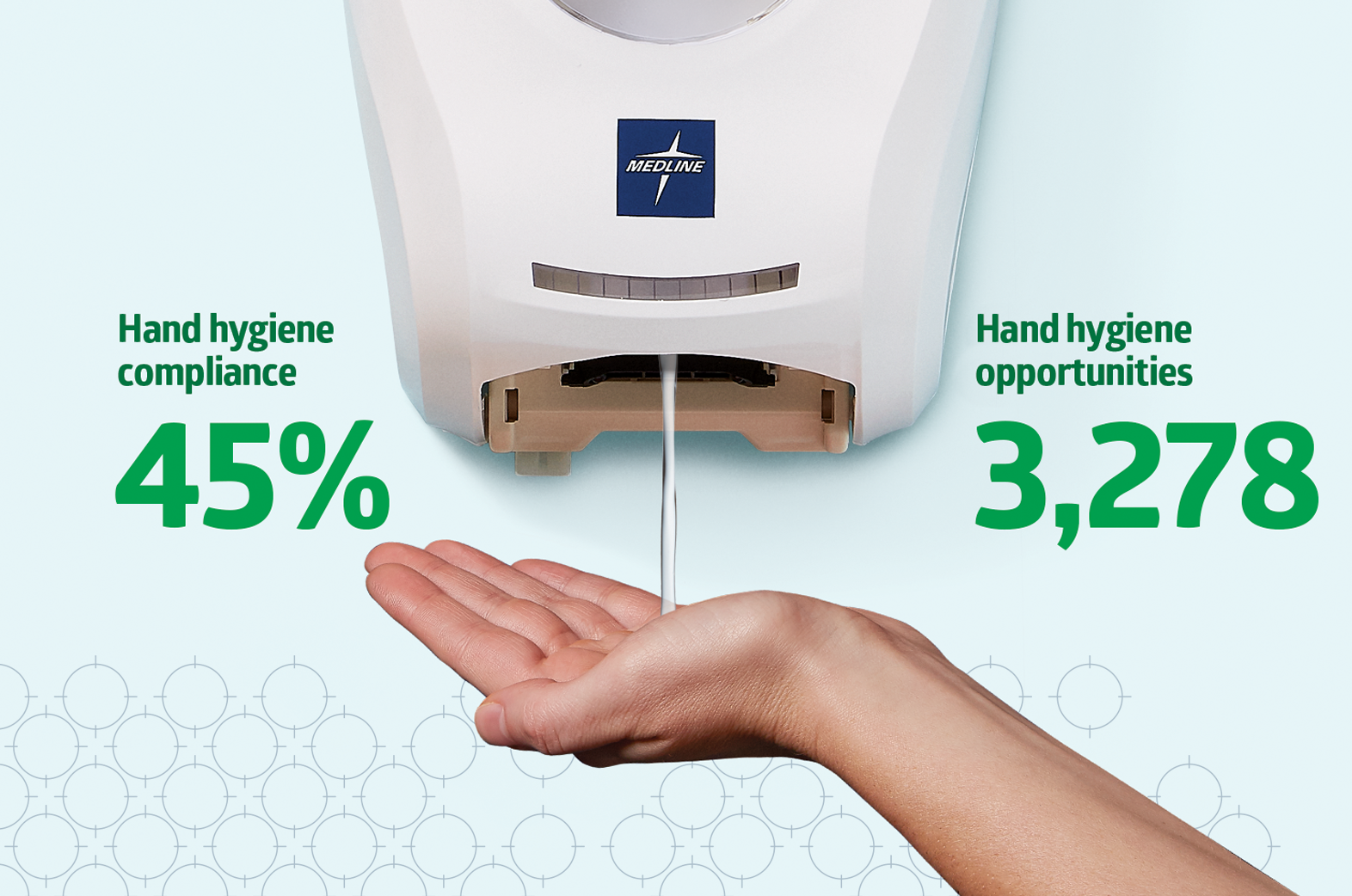Your hand hygiene monitoring system: Include NFMI technology
Learn how it boosts hand hygiene compliance and the features to look for.

In 2009, The Joint Commission published “Measuring Hand Hygiene Adherence: Overcoming the Challenges.” The monograph stated that measuring hand hygiene behavior and providing staff feedback were both essential to reducing the risk of healthcare-associated infections (HAIs). At the time, the only ways available and cited for measuring hand hygiene were “observation, product measurement and surveys.”1
As we know now, these are poor approaches for accurate and reliable measurement. Visual observation is biased and typically overstates compliance by up to 300% (Srigley, et al. 2014, among other studies).2 Product measurement lacks an accurate denominator (it’s impossible to know how much product should have been used with any accuracy) and surveys are essentially biased opinions.
But we’ve come a long way since that publication. Electronic monitoring systems were just hitting the market in 2009. While some technologies are still in use today, better options are available. Here’s a look at some of the drawbacks of the outdated technology and what’s next with e-monitoring:
Outdated technology: some e-monitoring system limits
- RFID (radio frequency identification devices) with RTLS infrastructure (real-time locating system) is subject to signal attenuation and can lead to inaccurate capture of hand hygiene events.
- Alcohol detection systems work adequately for sanitizer, but what about soap and water events? Also, these systems often require holding one’s hands close to the badge, a potential human factors concern.
- Group-only systems fall short because we now know individual healthcare worker data and feedback are essential to driving sustainable behavior change.
- Many monitoring systems provide only “in and out” data and miss WHO 5 Moments standards.
Entering 2021, the next generation of e-monitoring is emerging with near-field magnetic induction (NFMI) systems. Many of us use NFMI every day. It’s the same technology that enables keyless car starts. NFMI fobs use centimeter-level proximity sensitivity to detect whether you are inside or outside of the car. When you’re in a certain zone, you can start the car.
As a patented inventor of early-generation monitoring systems, I was impressed when I “got under the hood” of this new generation of systems. They can accurately and reliably measure both “in and out” or the WHO 5 Moments for hand hygiene. NFMI is a real advance in systems design—when you factor in the economics, you have a real game changer. NFMI can cost from 50-80% less than RFID/RTLS, alcohol detection and group-only systems.
5 things you should know about NFMI
- NFMI has centimeter-level accuracy vs. RFID’s meter* level accuracy, allowing proximity to bed/patient zones for WHO 5 Moments measurements.
- NFMI signals pass through the body while the body absorbs RFID signals. This makes NFMI data more reliable than RFID, which can miss events and understate compliance.
- NFMI needs very little power to run. With multi-year battery life, battery replacement is rarely needed.
- NFMI allows for AI software integration. A “smart” system can more sensitively detect compliance events—reliability that eliminates “data denial” by staff.
- NFMI is low cost with light infrastructure, making it the most affordable, scalable and highest ROI hand hygiene monitoring technology available globally.
*accuracy limit of most RFID systems
Is NFMI electronic monitoring for you?
If you’re evaluating an electronic monitoring system for your organization, this list of essential criteria and considerations can help:
1 | Technology platform
NFMI is the most advanced technology. If you’re considering other technologies, they should meet the criteria important for your facility in points 2-9. Every facility has to decide what works best within its safety culture and financial situation and find the best blend of clinical features for their individual budget.
2 | Performance standard
Should measure either the WHO 5 Moments, “in and out” or both standards.
3 | Reporting level
Should deliver both group and individual level reporting.
4 | Communications network facility support requirements
Should be a fully stand-alone infrastructure requiring no integration with the hospital Wi-Fi or IT network.
5 | Point-of-care reminders
Should be able to alert and “rescue” potential missed opportunities at point of care.
6 | Contact tracing
Should be capable of contact tracing and reporting.
7 | C. difficile room reporting
Registers both soap and sanitizer event trending to deliver real-time staff feedback around C. diff protocol. The C. diff protocol requires soap and water hand hygiene. Alcohol-based hand sanitizer does not kill C. diff spores.
8 | Hand hygiene dispenser requirements
Should be soap/sanitizer-brand agnostic; able to use any hand hygiene brand.
9 | Economic model
Choices include systems with an upfront capital investment and regular maintenance costs or a subscription/fee-based agreement. The latter can be the most cost-effective over time, but be sure the fee covers all costs including, but not limited to: hardware infrastructure and installation, badges and badge administration, unlimited data access (with option for log-on or auto email push reports), staff training, maintenance and repair, battery refresh/replacement, 24/7 system integrity monitoring and unlimited desk support.
It’s exciting to see new technology offerings emerging. I recently spoke to colleague Michael Mutterer, VP, Patient Care and Chief Nursing Officer, Silver Cross Hospital in New Lenox, IL, about what he was doing to drive hand hygiene compliance.
He said: “We’re excited to be early adopters of an NFMI-based electronic hand hygiene monitoring system. It’s the only technology that lets us monitor WHO 5 Moments or “in and out” standards of care. The accuracy is far greater than RFID technologies that, quite frankly, are now outdated. Finally, it’s the most affordable technology we’ve seen to date and that made it easy to justify cost to leadership.”
It’s the right time for hospital leaders to adopt what will most likely become a best practice approach for hand hygiene: electronic monitoring for measurement and direct observation for coaching, feedback and obstacle elimination.

Paul invented the first electronic hand hygiene monitoring system designed to improve hand hygiene performance while reducing infections and costs. He is an innovative and mission-driven leader with more than 35 years of experience in hand hygiene and patient safety solutions. Paul also shares hand hygiene insights as a monthly contributor to Healthcare Hygiene Magazine.
Want to explore more insights and ideas to improve hand hygiene compliance?
Watch this webinar featuring hand hygiene thought leaders on challenges and new approaches to hand hygiene in a post-Covid environment.
Explore a comprehensive approach to hand hygiene from best practice guidance to education, training and a system of products.
Disclosure: Medline is a 2021 member of the Leapfrog Partners Advisory Committee and has a collaborative relationship with a company that offers electronic hand hygiene monitoring services.
